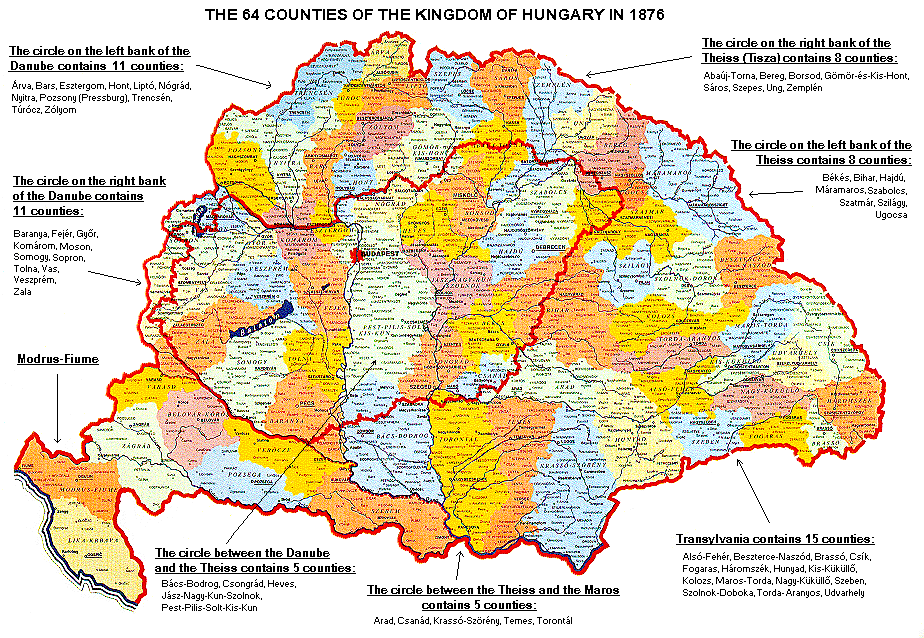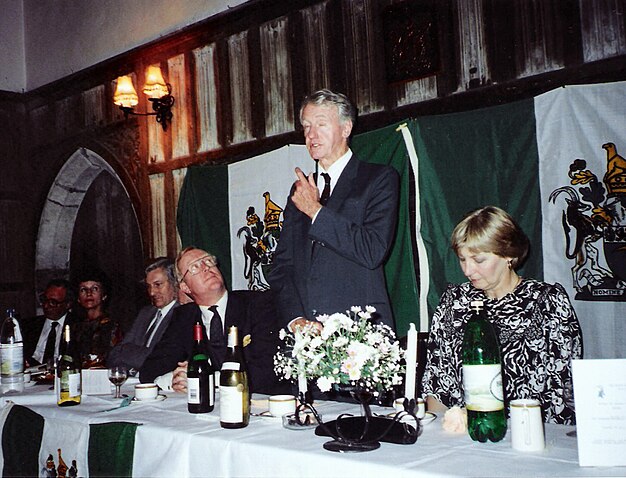Where Are They Now
HU JINGYI: 1892-1937
Born and raised in Shaanxi province, Hu first came to notice in 1910, when he joined Sun Yat-Sen's Tongmenghui, or the National Revolutionary Alliance, a secret society comprised of China's different revolutionary elements. In 1911, following the Wuchang Uprising, Hu led a revolt in Shaanxi, cementing his status as a major force in the province. In 1913, Hu joined the Kuomintang and fought against Yuan Shikai's government, and afterwards continued to hold posts in the military of Shaanxi. When Feng Yuxiang orchestrated the Beijing Coup and founded the Guominjun (KMC), Hu allied himself firmly with the movement. Hu, as an aide to Feng Yuxiang, cooperated with the Soviets to gain funding, allowing the communists a free hand in the provinces in the control of the Guominjun. In 1927, the KMC and the KMT joined forces in hopes of uniting China under one government, attacking the Zhili and Chihili factions. However, due to a Soviet backed uprising in KMT territory, the expedition was a failure, causing the KMT and KMC to ally themselves to one another. In 1930, the KMC was folded into the KMT and Hu became the governor of Shaanxi. In 1937, after 7 years of peace, and ideological differences between the North and South of the Republic of China (KMT), Feng Yuxiang and Li Zongren launched an attack on Guangzhong in hopes of dislodging Chiang and the Blue Shirts Society from power. Hu was a participant and lead the KMC of Shaanxi in the Battle of Henan before being killed during a raid by Chiang forces.
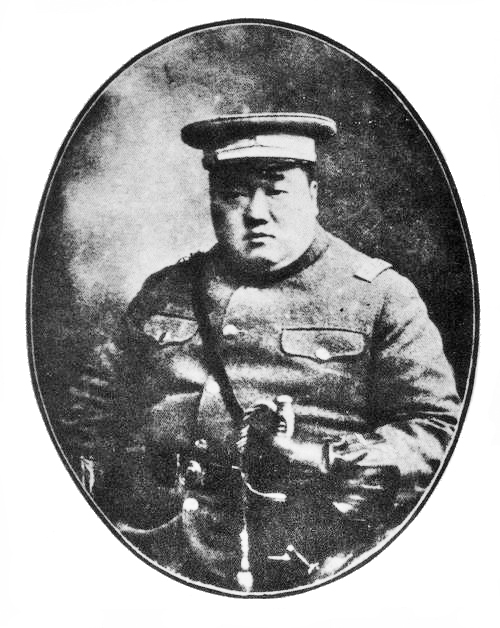
JOSEF STROOP: 1895-1965: Born and raised in the German Empire, Stroop joined the Imperial Army in 1914 and served on the Western Front. He was wounded during his service and received the Iron Cross, Second Class. After the war, he returned to his job at the Land Register in Detmold, but became involved in General Ludendorff's neo-paganistic religious movement, the Tannenbergbund, in the 1920's, and became a member of the DNVP in 1928. When the German Civil War broke out, Stroop was appointed to the head of the Detmold militia, and due to troop reductions, ended up leading a battalion during Reichswehr operations in Thuringia. Following the war, Stroop returned to Detmold, and returned to the land register. Stroop returned to service in 1939 during the Danzig War, but due to his age, 44, was kept in reserve. Following the Danzig War, Stroop once again returned to Detmold. Returning to the Land Register in Detmold, he retired in 1955, with a civil servants pension. Josef Stroop would die in 1965, survived by his son Jurgen Stroop, who would become well known for the war crimes perpetrated during his time in the Nachtwache.
LI MI: 1902-1937: Li was born and raised in the Yunnan province, and although poor, was able to receive acceptance into the Whampoa Military Academy. He participated in the Northern Expedition of 1927, and gained favor from Chiang Kai-Shek after his response against the Wuhan government. Li would die during the fall of the Guangzhou government and the breakout of war in China in 1937.
KURT TANK: 1898-1933: Tank served in the Great War as a member of the German Cavalry, and after the war became enrolled in Berlin Technical University. Graduating in 1923, he gained employment at Rohrbach Metall-Flugzeugbau, a Berlin based aircraft design corporation. Tank originally worked in designing passenger aircraft, as war planes were banned under the Treaty of Versailles. Tank quit, and found work at Albatros, the famed builders of Germany's planes during the Great War. He began work as a test pilot, and in 1929, Albatros went bankrupt, and was merged with Focke-Wulf. In 1931, with the outbreak of the German Civil War, Tank joined the nascent Reichluftstreitkrafte, and flew reconnaissance missions over National Sociliast territory. In August of 1933, his plane was shot down and Tank died on imapct, he was 35.
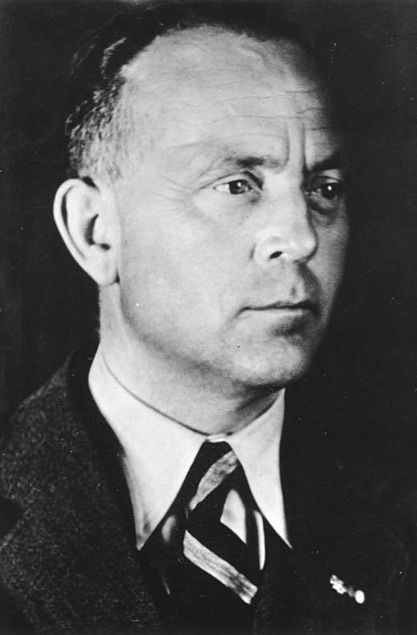
HUGO SCHMEISSER: 1884-1953: Schmeisser was crucial in the growth and development of machine gun technology, and as such did not actively serve during the Great War. Following the Treaty of Versailles, Schmeisser and his brother formed their own company in Suhl, in defiance of the Treaty of Versailles. In 1922, he created a second company to keep himself from losing his patents if the first,
Industriewerk Auhammer Koch und Co, went bankrupt. In 1928, Schmeisser developed the MP-28, and found a buyer in the German police. He also began to export his weapons, finding buyers in China, Japan and South Africa. In 1931, with the outbreak of the German Civil War, Schmeisser and his brother were ordered to Berlin, where they began construction on thousands of new machine guns for the Reichswehr. The IAKC became an international name in weaponry, and was funded partially by the German government. After the end of the Civil War, Schmeisser and his company produced more and more weapons, growing richer during the Ethiopian War, the Danzig War and the 3rd Balkans War. Schmeisser would die after perfecting hismasterpiece, the StG 44, which became the asault rifle of the Reichswehr. Schmeisser died in his home in 1953.
Uziel Gal: 1923-1957: Born and raised in Weimar, Gal's family fled Germany for Great Britain in 1931. Growing up in London, Gal became involved early on with the Labour Party. Due to the relative peace of Great Britain, Gal became an electrician. When the Franco-British War broke out, he remained in London. Gal died in 1957, as the result of a hate crime perpatrated by members of the National Socialist British Workers Party. He was 34.
YISRAELI GALIL: 1923-1995: Not much is known of Yisraeli Galil, he was born and raised in the Mandate of Palestine, and remained after Palestine was given independence in 1976. A member of Palestine's Jewish minority, Galil became acutely aware of the discrimination it began to receive and immigrated to the United States in 1981. He died in his home in Palm Beach, in 1995.
WILHELM MESSERSCHMITT: 1898-1937: Serving in the Great War, Messerschmitt and his colleague Friedrich Harth, designed the S5 Glider. In 1923, Messerschmitt founded his own aircraft company in Augsburg. He designed the Messerschmitt M 17 and M 18, and began production in 1927. Continuing his designs, Messerschmitt lost his fortune, when his planes were "confiscated" by the National Socialists and used in the National Socialist Air Corps. In 1937, Messerschmitt was executed for collaboration with rebel forces.
WILHELM CANARIS: 1887-1955: A member of the German Navy in the Great War, Canaris joined the Freikorps when the war ended, and then joined the Reichsmarine. He became a career naval man, and was promoted to Captain in 1931. Canaris lived out the war rather peacefully, and after the Civil War ended, remained in the Reichsmarine. In 1939, he was promoted to Admiral, and given control of the Baltic Fleet for the Reichsmarine. His failure's during the Danzig War disgraced Canaris. In 1940, he received a court martial, and retired. He died at the age of 68 in 1955. Before he died, Reinhard Heydrich visited with Canaris, although it is not known what was said, Canaris was given a heroes funeral in Berlin, and honored with a memorial statue at the Danzig War monument in Bremen. In 1966, members of the Nachtwache destroyed the statue and defaced the monument. Heydrich ordered the monument rebuilt, and had it dedicated before he left power in 1968. Immediately after his swearing in, Holzknecht ordered the statue and monument taken down. The statue of Canaris, would find it's way into the hand of thieves, and in 1970, was given to the city of New York, who placed it in a public park, which bears Canaris's name.

GUSTAV RITTER VON KAHR: 1862-1931: In 1920, von Kahr gained control of the Bavarian government in part thanks to military influence from the failed Kapp Putsch. Von Kahr created an environment that made Bavaria a haven for right wing nationalist groups, including those who advocated the secession of Bavaria from Germany. In 1921, von Kahr resigned when the government passed a decree forcing the government's to acknowledge the protection of the government. In 1923, after a series of heightening political violence in Bavaria, von Kahr was appointed the Staatskomissar of Bavaria, a virtual dictator. He formed an alliance of power with the head of the Bavarian police, Hans Ritter von Seisser, and Otto von Lossow, the leader of Reichswehr forces in Bavaria. Adolf Hitler, leader of the NSDAP, attempted to gain von Kahr's support in recreating the March on Rome and establishing a nationalist government Berlin under Erich Ludendorff, the famed war hero. Von Kahr refused, having his own plot to take power in Berlin. On November 9th, 1923, von Kahr hosted a meeting of 3,000 people at the Burgerbraukeller, which was stormed by Sturmabteilung forces and Adolf Hitler, who demanded the cooperation of von Kahr, Seisser and Lossow in the new government's formation. They refused and when the putschists marched on the War ministry, 15 were killed, including Hitler.
After the trial of the Nazi leaders, von Kahr retained control of Bavaria but lost popular support amongst the right and was taken out of power in 1927, when Gregor Strasser took official control of the NSDAP and held a mass protest against the traitor. In 1930, von Kahr, Seisser and Lossow were all killed by members of the Viking Bund on behalf of the NSDAP.

HORST WESSEL: 1907-1931: Horst Wessel was an early member of the Bismarckjugend and his father was a member of the DNVP. However, in 1926, citing differences with the ideology of the DNVP, he joined the NSDAP. While with the Nazi's he was selected to become a member of the Sturmabteilung, and soon caught the attention of Joseph Goebbels, a major propagandist whose role in the party grew under the support of the Strasser wing of the party. Horst Wessel soon became the leader of the SA-Troop in his local area in Berlin. Wessel was major plotter in the Berlin Uprising and was killed by members of the Reichswehr in the attack on the Reichstag.
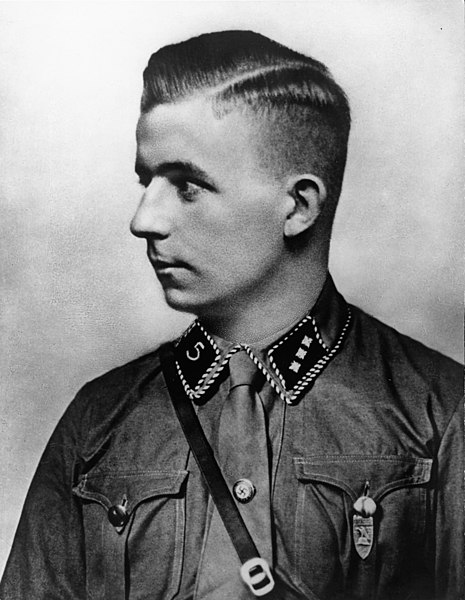
JOSEPH GOEBBELS: 1897-1964: Goebbels, a writer known for schmoozing and his wit, joined the NSDAP in 1924, after witnessing Gregor Strasser speak. He immediately became head propagandist for the northern portion of the Nazi organization and in 1930, moved to Munich where Strasser had organized the largest Nazi base of power. When the Berlin Uprising began and the National Socialist Revolution seemed imminent, Goebbels became the head of propaganda for the national revolution. In 1933, with the war seeming more and more hopeless, Goebbels was sent to Switzerland to speak to foreign governments on the National Socialist governments behalf. When the Civil War ended, Goebbels fled Switzerland for France. In 1935, Germany requested his extradition, but Goebbels escaped again, this time to the United States. Goebbels settled down in New York City and became a successful novelist. He died in 1964, at the age of 67.
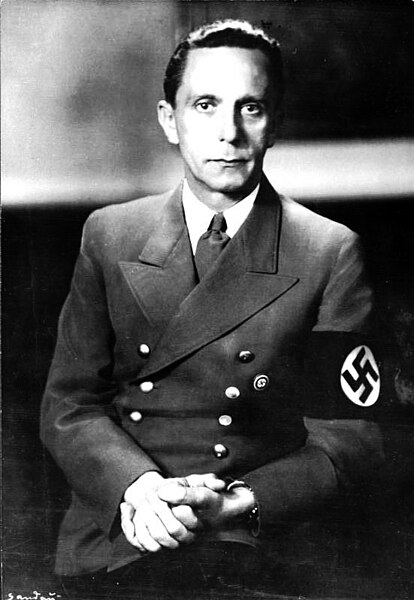
YAN XISHAN: 1883-1929: The warlord of the Shanxi province during the 1910's and 20's, Yan allied with Chiang Kai-Shek's National Revolutionary Army, when they began their Northern expedition. But the Communist revolt in the Wuhan had thrown the plan out of order and Yan allied himself to the Eastern League. In 1928, Zuolin consolidated control of the Eastern League as the Republic of China. In 1929, in a vicious campaign, the Republic of China, with the assistance of Japanese bombers, conquered Shanxi. Yan was executed by hanging in Beijing.
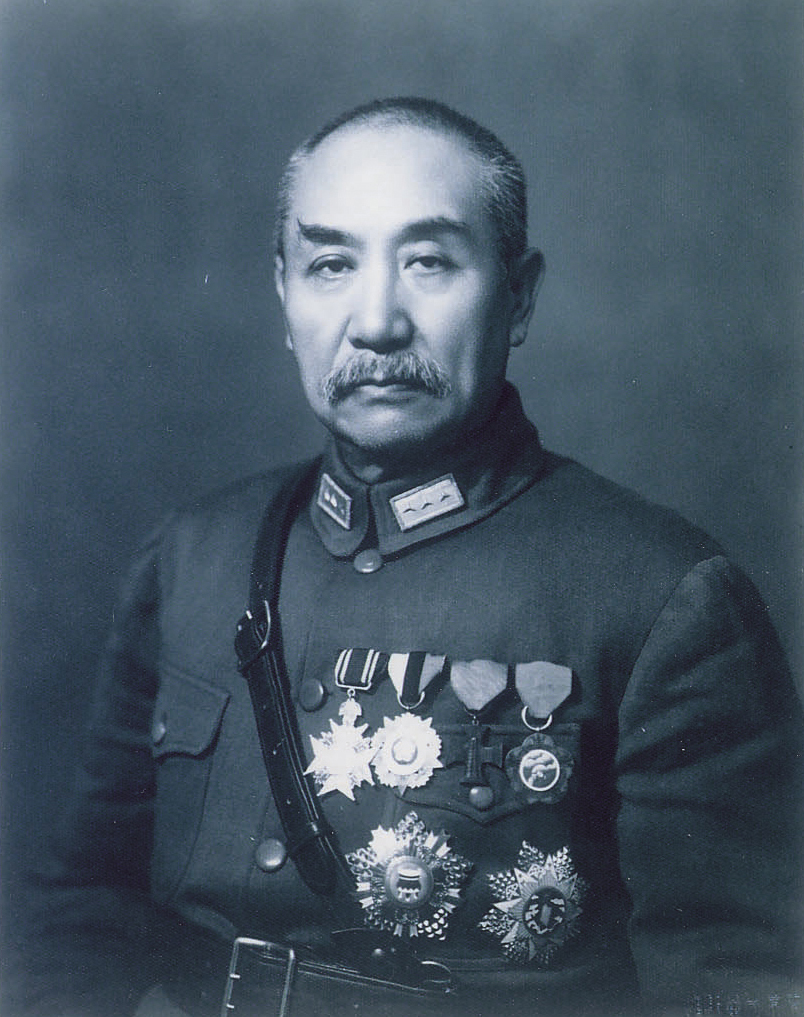
SHENG SHICAI: 1897-1967: As a member of the Guominjun, Sheng became heavily involved the ideological development of National Socialism within China. He was learned German and became Otto Strassers liaison to the Guominjun. When the proclamation of the National Socialist Republic began, he set up shop in Shaanxi and remained there until 1959. When the Zhang Xueliang invasion came, Sheng fled. When the World War ended, he returned and was present at the declaration of the Unitary Peoples Socialist Republic of China. He died in 1967, and was buried at a state funeral attended by Strasser-Ruan.
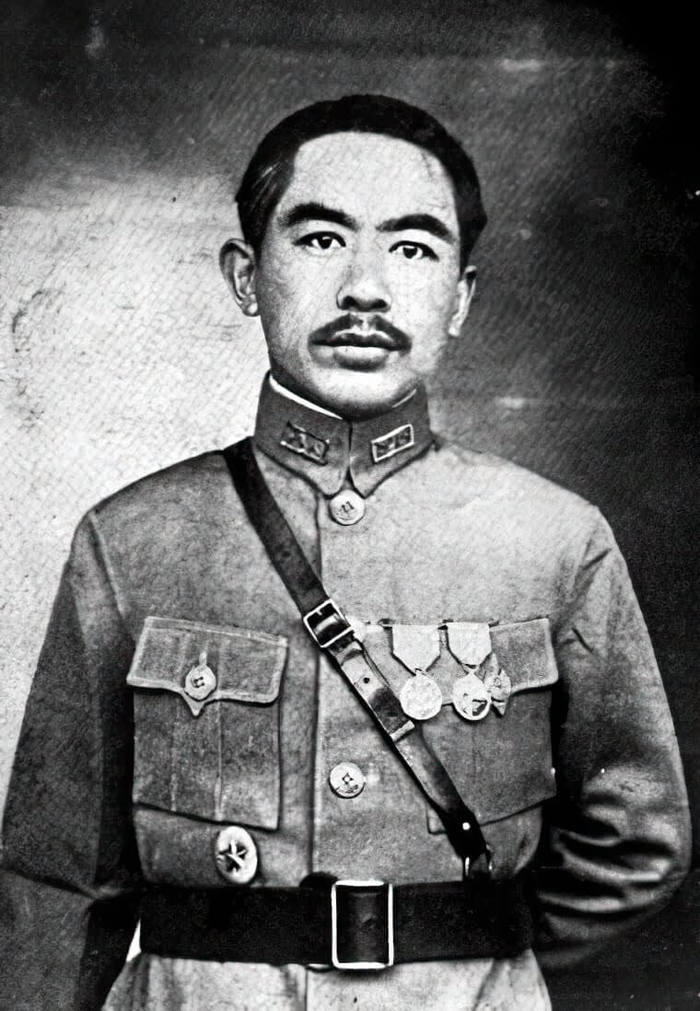
YANG ZENGXIN: 1867-1937: Yang was the dictator of Xinjiang virtually from the time of the Xinhai Revolution. He carefully allied himself to the Beiyang government and managed to keep himself in power. In 1928, Yang became the brunt of KMT attacks. His armed force proved stable, but not enough and in 1929, Yang was captured by KMT leaders and imprisoned in Guangzhou. Zengxin was executed following the capture of Guangzhou in 1937.
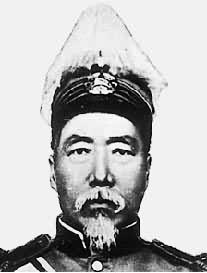
MA BUFANG: 1903-: Bufang was trained in Islam and was to become an Imam in his native Qinghai province, however in 1922, he followed his brother, into joining the military. As members of the Ma family, they joined the Ma Clique and set about defending the territory under their control, Qinghai, Ningxia and Gansu. In 1928, when the Western Expedition began, Bufang and his brother fought against their former allies in the Guominjun, and were defeated, excluding Bufang. After the death of his brother at the Battle of Lanzhou, Bufang pushed his forces into Qinghai and formed his own government amongst the Hui people. He orchestrated the assassination of the leaders of the Ma Clique, and orchestrated Qinghai's survival under his governorship. So in 1929, Ma Bufang became the governor of Qinghai Province. Bufang's Qinghai province was slightly detached from the Guangzhou government and when the war for control of China began in 1937, Bufang sided with the Guominjun, who had centered their government in Xi'an. Bufang orchestrated the founding of the Islamic Republic of China, centered in Qinghai and allied to Hu-Hsiang's National Socialist Republic of China. However, in 1938, Bufang's Islamic Army was defeated by Zhang Xueliang's New Beiyang Army and was executed for treason against the Republic of China.
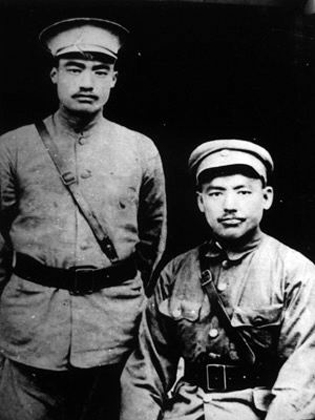
ZHOU ENLAI: 1898-1976: Beginning his long career as a Communist politician as a student activist in Tianjin, Enlai quickly became a leading intellectual within Chinese Communism. Enlai was one of the early members of the KMT who supported Communism and urged unity among the two causes against the feared hegemony of Japanese supported Zuolin. After years of serving the KMT and the Communists in Europe, he returned to China to join the political department at the Whampoa military academy, the breeding ground for Chiang Kai-Shek's support group, which was largely supported and funded by the Soviets. Enlai became one of the many KMT ambassadors to the Soviets, hoping to continue funding for the Nationalist's. He saw brief military service during the war to consolidate control of Guangdong and was present at the capture of Guangzhou by KMT forces. Following the Zhongshan Warship incident, Enlai left the Whampoa clique and became more heavily involved with the Communists Party of China, becoming a major leader in the group. He also established ties with the remaining left wing faction of the KMT, especially those under Wang Jingwei. In 1926, he was majorly opposed to taking action against the KMT and was excised from the party by Mao Zedong. When the Wuhan government finally fell in 1930, Enlai returned to China taking control of the small Communist movement. In 1940, Enlai, fled China for the Soviet Union. It was at this time that he became Moscow's favored son. When the Soviet's founded the collaborationist force from Chinese soldiers, Enlai was appointed to the head of the organization. In 1961, when Soviet forces entered Beijing, Enlai was appointed the head of the new Peoples Republic of China. He served as head of the Peoples Republic of China until his death in 1976, shortly after the start of the Second World War.
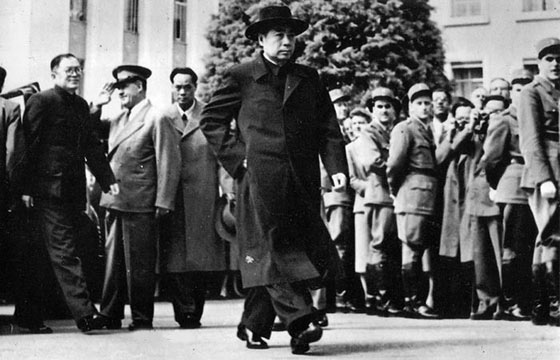
RUDOLF HESS: 1894-1935: Hess, an aviator in the Great War, became involved with the Nazi movement in 1920, after hearing Adolf Hitler speak. Hess became a devotee of Hitler and personal assistant. He introduced Hitler to his friend, Haushofer, a professor who sought to explain history in terms of racial bias. Haushofer was influential on Hitler, but faced competition from Scheubner-Richter, who was against the concept of Lebesraum, a form of colonialism to be based around seizing huge territory in the east. During the Beer Hall Putsch, Hess commanded a brigade in the SA and after Hitler's death, was sentenced to 5 years in prison, although he would only serve 3. In 1926, after being released, he discovered that Rohm and Strasser had taken full control of the party. Finding a base amongst the original members, Hess attempted to retake control of the party in a speech at a Nazi rally in Munich in 1927. It was a meeting of party members, and Hess was still the official head of the party. However, Strasser used this meeting to officially take control of the party,
After being unseated from power, gathered around 1,000 other members and formed the splinter
Nationalsozialistische Volkspartei or the National Socialist Peoples Party. He quickly found little to no support for his movement, tainted by it's association with the National Socialists, and considered a weaker version of the DNVP. As a result, in August of 1927, Hess met with Richard Walther Darre, the leader of the Artaman League. Hess formed an alliance, to make the NSVP the political front of the Artamanians. However, he lost control at the first party congress in Dresden, unseated in favor of Darre. Hess was ostracized from a position of power, but continued to make speeches for the NSVP around Saxony. When the Civil War came, he offered his service to the new Reichluftsteitkrafte, but was turned down due to his association with the Nazis. In 1935, Hess was found dead in his home in Dresden, from a self inflicted gun shot wound, he was 41.
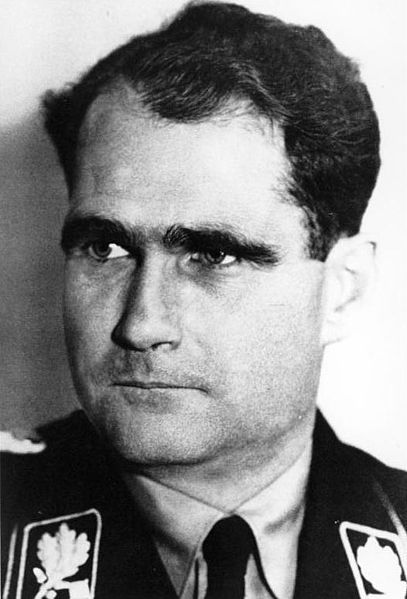
OTTO SKORZENY: 1908-1977: Skorzeny was born to a middle class family in Vienna in 1908. He grew up without much and as a result was ambitious. In college, Skorzeny received his trademark scar whilst fencing. In 1931, Skorzeny became involved in the Austrian Nazi Party. However, when the Berlin Uprising occurred, he witnessed first hand the short and sweet coup of the Heimwehr and the power taken by Dollfuss. Joining the Heimwehr, and the newly formed Fatherland Front, a merger between the Christian Social Party and the Heimatblock. Skorzeny quickly proved himself capable, but was noted for his sympathy with the Nazi cause, and pushed out of politics. Skorzeny joined the Austrian Army when they were merged with the Heimwehr in 1933, and participated in the invasion of Bavaria in 1934. It was during this mission that he began his long friendship with the Italian military. In 1935, he commanded a battalion of Austrian volunteers in East Africa, fighting with the Italians. Following this service, Skorzeny returned to Austria and continued his military career, rising to the position of General in 1945.
With the outbreak of the World War, Skorzeny proposed a daring invasion of Czechoslovakia to seize the Sudetenland. He was turned down, but would end gaining complete control of Austrian forces when the invasion of Slovenia began in 1961. His occupation of Slovenia, or Kairn as it became formally known, was considered his finest moment. When the Second World War began, Skorzeny was the overall commander of Austrian forces, and fought hard to defend Austria from the onslaught of German forces. When German forces captured entered Vienna in 1975, and began the brutal occupation of Northern Austria, Skorzeny organized the resistance in the Austrian Alps. He would die in 1977, from a gangrenous wound. Skorzeny was honored in the rebuilding of Vienna, and was posthumously awarded the Tapferkeitsmedaille, Gold Class.
Skorzeny and other Austrian volunteers meeting with Il Duce after service in East Africa.
ALFRED ROSENBERG: 1893-1933: Alfred Rosenberg, a Baltic German and associate of Max von Scheubner-Richter. Supporting the whites in the Russian Civil War, Rosenberg immigrated to Germany in 1918. Arriving in Munich, he became a writer for the Völkischer Beobachter, a far right paper that was acquired by the occultist Thule Society in 1919. In 1920, it became the official paper of the NSDAP, thanks to Dietrich Eckhart, the Nazi's first propagandist. After the Beer Hall Putsch, the paper was shut down, and it's writers were imprisoned. Rosenberg escaped conviction, and was appointed head of the NSDAP. However, in 1924, after Hess was given the 5 year sentence, the NSDAP appointed him as the leader of the party, in order to pay homage to the Putsch. After leaving power, Rosenberg realigned himself with Scheubner-Richter, and began planning the formation of alliance with the Aratman League in 1926. In 1927, after Hess lost control of the party, Rosenberg joined the nascent NSVP, and was appointed head propagandist, splitting from Scheubner-Richter in 1928. Rosenberg quickly became wary of Heinrich Himmler, the head of the Wehrbauren. With Darre, he attempted to keep control over Himmler's growing influence, but was eventually overruled. In 1931, Rosenberg was appointed the head of political ideology for the Wehrbauren, who had since evolved from a glorified neighborhood watch, into a full time paramilitary. In 1933, at the Battle of Dresden, Rosenberg was killed by "friendly fire". Himmler had been present and swore that the soldiers story was true. His body was returned to his hometown of Tallinn, and buried with honors from the NSVP. His tomb was destroyed in the Soviet invasion of Estonia in 1957.
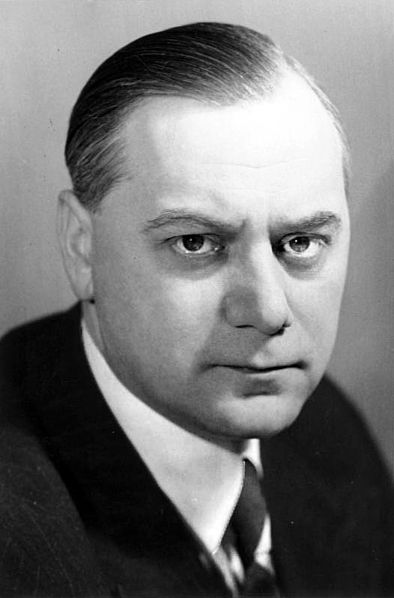
Alfred Speer:1905-1981 : Speer was architectural student, who was present in Munich during the Beer Hall Putsch. In 1925, he transferred to Berlin, and became the assistant of Heintich Tessenow, whom Speer admired greatly. In 1930, Speer witnessed a speech by Joseph Goebbels and was disgusted with the ideology. He registered and began voting for the DNVP. When the Civil War broke out, Speer joined the Reichmarine and served during the hostilities, and was discharged in 1935. Speer became involved in rebuilding Southern Germany, and was given a free hand in the rebuilding of Kempten. Speer became a favorite architect of the establishment, and was key in the design of the Olympic Village for the 1944 Berlin Olympiad. At the outbreak of the World War, Speer was appointed the head of Public Safety, commanding labor gangs to build bunkers and fortifications throughout Germany. In 1962, he designed the Monument of Reunification in Danzig. He was famed for his abilities, and in 1964, immigrated to the United States, establishing an architectural firm in New York. He would die in 1981. His son, Albert Speer Junior, became an urban planner in New York.
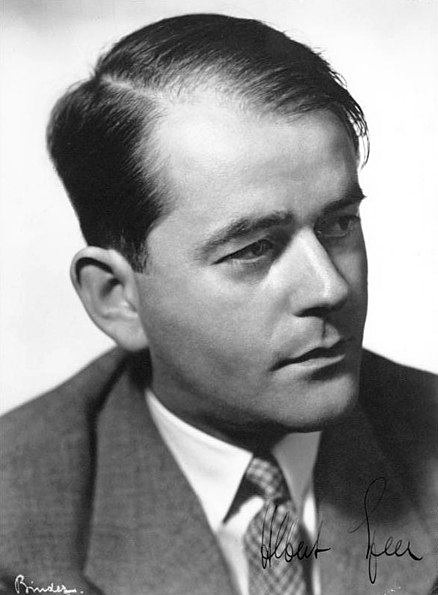
FRITZ TODT: 1891-1933: Todt was an early member of the NSDAP, and was a key military strategist for the Sturmabteilung. In 1930, he was responsible for the founding of the National Socialist Flyers Corps, and was responsible for the organization of the Nazi NSFK during the German Civil War. In 1933, he piloted a reconnaissance flight over Dresden. He was shot down, but his body was never recovered.
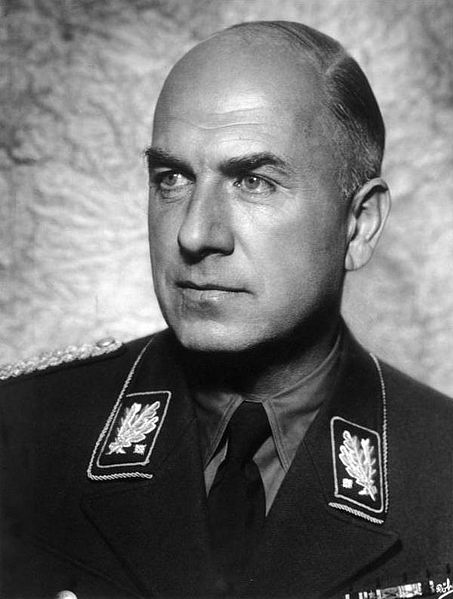
HERMANN GOERING: 1893-1923: Hermann Goering was a famed pilot in the Luftsreitkrafte, serving alongside the infamous "Bloody Red Baron" Richtofen. After the war, Goering moved to Denmark and then Sweden, working for a Swedish airline. After meeting Count Eric von Rosen's sister in law, Caren von Cantznow, Goering fell in love and relocated to Bavaria in 1922. He joined the NSDAP in 1922, and quickly gained a following, being appointed Oberster-SA Fuhrer in 1923. Goering lead the SA forces during the Beer Hall Putsch, and suffered a shot to the leg during the coup. He was smuggled to Innsbruck, but succumbed to his injuries do to an infection sustained while being smuggled.

JOACHIM PEIPER: 1915-1978: Joachim Peiper was born in Berlin and raised in Silesia. His father was a veteran of the East African Campaign in the 1900's, the Great War, and was a member of the Freikorps. After the Aratman league arrived, his father joined the Wehrbauern, and aided the rise of Heinrich Himmler. Peiper was a member of the Aratmanian scout movement, and then the Wehrbauern, whom he joined at 16. At 17, do to his father's influence with Himmler, he was appointed to become Himmler's secretary. In 1936, he participated in Himmler's revolt against the German government, but was not present when the base fell to the Reichswehr. He survived, and became involved in the Nachtwache, a successor to the banned NSVP and Aratmanian League. As a member of the Nachtwache, he was the leader of the Himmlerist faction, promoting an ideology of rejecting Judeo-Christian morals, and a return to a time of established order, from the ranks of the pure German people. As such he was very unpopular with the government and the DNVP. In 1940, Peiper was appointed to the head of the Nachtwache, and supported the groups acts of rebellion against the government of the DNVP.
Peiper began to speak secretly in academic circles throughout Germany, arguing for a return to a Germany before the Great War, a time of peace and honor. He was laughed at often, but Himmlerist theory became popular with small subsets of the National Socialist. In 1944, Peiper founded National Socialist Action, or the Nationalsozialistisch Aktion. The NSA gained a large following in the student movements, but found his main opponent to be Diedrik Holzknecht, a young Berlin students, whose theories on Strasserist economic theory were considered the most applicable. So the two merged their movements in 1949, forming the NSE or National Socialist Unity. Through Holzknecht's oratory skills, and Peipers organizational foundations, they made rapid success. At the first party meeting in 1950, held in Amsterdam, Holzknecht was selected to be the leader of Fuhrer of the NSE, and Peiper was appointed head of the Stabswache, the personal bodyguard and the Nachtwache, who were formally tied to the NSE and it's paramilitary wing. Their uniforms, designed by Peiper, were silver shirted, in order to represent a new era of National Socialism. The Stabswache however, were given black uniforms, and were known for the skeleton key insignia. In 1959, the NSE began to gain complete dominance of the student population, thanks to the harsh reign of Staatsoberhaupt Reinhard Heydrich.
However, in 1960, Holzknecht made well known to Peiper that it was time to assert the power of the Fuhrer within the NSE, and dissolved the Nachtwache. A new volunteer paramilitary, wearing the brown uniforms of the old Sturmabteiling, known as the NSE-Aktion, was founded. He appointed his newfound ally, Erhard Wulle. Peiper was allowed to retain control of the Stabswache, but the blow had been clear, and the message had been simple, Strasserist theory was the theory of the party. Peiper continued to well support for his organization, reforming the Nachtwache as a separate organization from the NSE. The new night watch mixed Volkisch traditions with the occultist practices of the Thule Society, promoting a new form of Aryan paganism. Peiper also folded the Stabswache, and formed the Schutzstaffel as the new guard of the Fuhrer. In 1964 and 1965, Peiper was responsible for many of the protests against the rule of Heydrich. In 1968, when free elections occurred, Peiper was elected as the representative of Saxony in the Reichstag. After the NSE received control of the government and Holzknecht was appointed Chancellor, Germany became a veritable melting pot of paramilitary associations. The Nachtwache swelled it's ranks, while the NSE-Aktion grew into a large force. After the Regensburg Declaration, the Stahlhelm bund front soldaten attempted to merge with the NSE-A, and were turned down. After Holzknect established the Republic of Germany in January of 1968, the Reichsbanner Scwarz-Rot-Gold was reestablished, as the paramilitary wing of the SPD. Peiper quickly grew weary of them, as well as the Otto Braun Youth.
In 1970, Peiper orchestrated a false flag operation. In the Reichstag on December 12th, 1969, Peiper claimed to have irrefutable proof that the SPD were receiving funding from the Rome Pact, as well as the DNVP. The Reichstag adjourned before the accusations could be addressed, but on Christmas Eve, Holzknect suspended the Reichstag and declared a state of emergency. Holzknecht then ordered the SS into a killing spree. Peiper was responsible for the deaths of 26 members of the Reichstag, including Falkenrath, the head of the DNVP. By the end of January, the National Socialists had begun their rule of Nazi Germany. Peiper and the Nachtwache became massively influential, and while Erhard Wulle was appointed to the head of the National Revolutionary Army (the Nationalumstürzlerischdruck), Peiper became the new secret police chief of Germany. When the Second World War broke out, Peiper's Nachtwache was personally given control over operations against the rebellious Third Polish Republic. From 1974-1976, Peiper was responsible for "population reductions" eradicating up to 35% of Poland's civilian population. With the outbreak of the Soviet Civil War in 1977, Peiper returned to Germany to command SS units in action against the American-Canadian invasion via Denmark. In 1978, after the Americans captured Hamburg, Peiper committed suicide in his family home, dying at the age of 63.
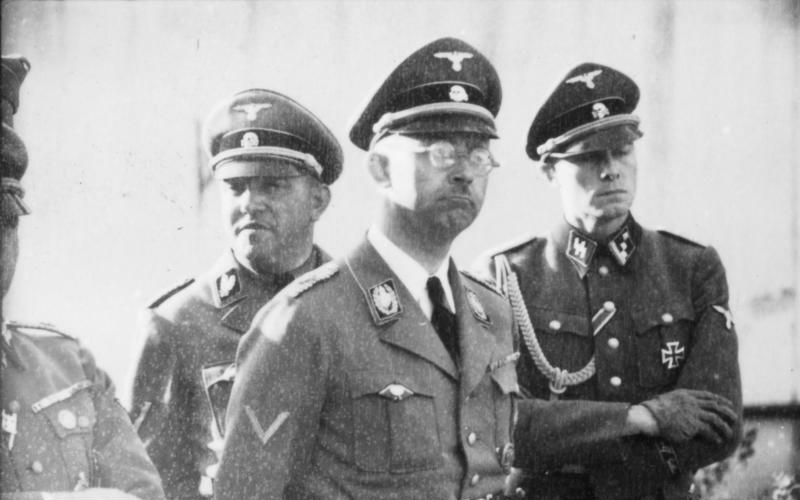
Himmler with Peiper in Berlin, 1935
IAN SMITH:1919-1966: Ian Smith was born in Southern Rhodesia, and was known growing up as an athlete and a scholar. In 1942, he graduated from Rhodes University in South Africa, and returned to Southern Rhodesia. His skill's as a Rugby player were noted, and while at university, he had become the captain of his team. In 1943, he joined the Western Province Rugby team and became the captain of the United Rhodesian side in 1944, who were still competing as a province in the Currie Cup. In 1945, Smith captained the United Rhodesian team in the Inaugural Rugby World Cup. Smith would captain the 1950 squad as well, and then retired. In 1951, he began his coaching career, and would eventually become the coach of his native Rhodesia. In 1966, he was killed in a guerilla attack outside his mansion estate in Salisbury.
